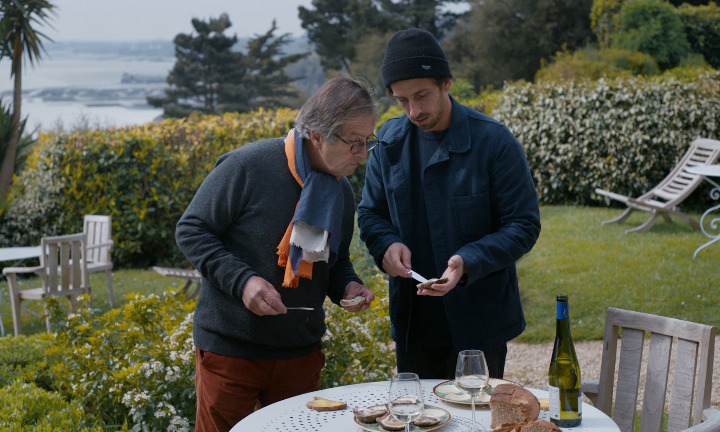s any food more decadent than the oyster? A truffle, perhaps, but the pungent fungus don’t have quite the same social grace as a fresh mollusc does. Fans of The Truffle Hunters will want to shuck back The Taste of Desire, a poetic study of oysters and the larger palate for finer things they represent. Using six characters presented on the half shell, director Willemiek Kluijfhout probes the complexities of the mollusc that delights some foodies and repulses others. The film unpacks the social elements that go hand-in-hand with the food we eat as well as the capitalist factors behind them and the pleasure principles that govern them. The Taste of Desire suggests that satisfaction can be as elusive as an oyster’s prized pearl.
The different characters allow Kluijfhout to explore oyster culture from all angles. In Sweden, Lotta Klemming dives for oysters and harvests the goods for local markets. Her chore is physically demanding, but brings unique rewards. How many people can pull an oyster from the ocean, crack it open, and knock it back while on the clock? Kluijfhout shows how the answer to this question is an enviable one. As the cameras follow Klemming from the waters to the fish markets, The Taste of Desire observes the process that goes into preserving the oysters’ freshness. It notes the perversity of this decadent act, since an oyster is still alive when one consumes it, which may be part of the delicacy for some foodies.
But the freshness is just one tasting note at which to marvel. The doc introduces Olivier Roellinger and Hugo Roellinger, a father-son duo of Michelin chefs in France who study the mollusc with hopes to delight their diners. These scenes are perhaps the likeliest to set viewers scrambling for the nearest oyster bar or fishmonger. Like Klemming, they relish the art of popping and shucking, delicately moving the meat away from the shell while preserving the juices that help the oyster slide to the back of one’s mouth. The camera gets right into the oyster’s shell and espies its wiggly texture. A live oyster is not a particularly attractive sight, yet Kluijfhout captures the mollusc with refreshingly cinematic clarity.
The chefs liken loosening the oyster to ruffling a girl’s skirt, so it would be remiss of The Taste of Desire to overlook the mollusc’s status as an aphrodisiac. Enter burlesque dancer Angie Pontani, who evokes a sensuous desire with her oyster-themed act. She slithers out of a shell and wiggles for onlookers like an oyster shimmies to the delight of an eater. Using glitter and a silver ball, Pontani adds a pearl number to her performance, connecting the film’s twofold interrogation of desire and seduction. Passion can, on one hand, be fed with gourmet food things, but the doc appreciates that some impulses are never truly satisfied.
Similarly, Chitose Ohchi in Japan deals with pearls and adds the capitalist element to the film. Her story is admittedly where the film meanders since the oyster’s characterization as elitist fare resonates elsewhere in the film, as does the factor with the pearls, which portray the oyster as a status signifier. Tying all these stories together, however, is English writer Nigel Moore as he completes a book about oysters. The author, who is terminally ill, synthesizes the factors that make oysters such odd, seductive, and satisfying creatures. The Taste of Desire develops a rhythm as it checks in on each of the stories before visiting Moore at his writing desk. He recaps the larger philosophical questions and anticipates themes to follow.
Kluijfhout ties the threads together with elegantly shot footage of a crowd savouring oysters at a party. The Taste of Desire is unabashed food porn, but it has bigger questions in mind. (It’s a fine balance of food porn and food for thought.) The film captures the pleasure of shucking oysters, particularly the social element and the treat yourself thrill they bring to any party. The doc interrogates humankind’s quest for fulfillment and, in doing so, leaves one truly satisfied.
The Taste of Desire premieres at Hot Docs 2021.












